Pedder Bay, British Columbia Wave Climate Study and Wave Protection Considerations
March 1991 Fisheries and Oceans reportPEARSON COLLEGE SHOREFRONT Lester B. Pearson College opened in 1974 on the north side of Pedder Bay on land formerly owned by the Department of National Defence . At high tide, most of the shoreline of the campus is rocky intertidal, however at low tide, mudflats appear along much of the shore. Lester B. Pearson College opened in 1974 on the north side of Pedder Bay on land formerly owned by the Department of National Defence . At high tide, most of the shoreline of the campus is rocky intertidal, however at low tide, mudflats appear along much of the shore.
-
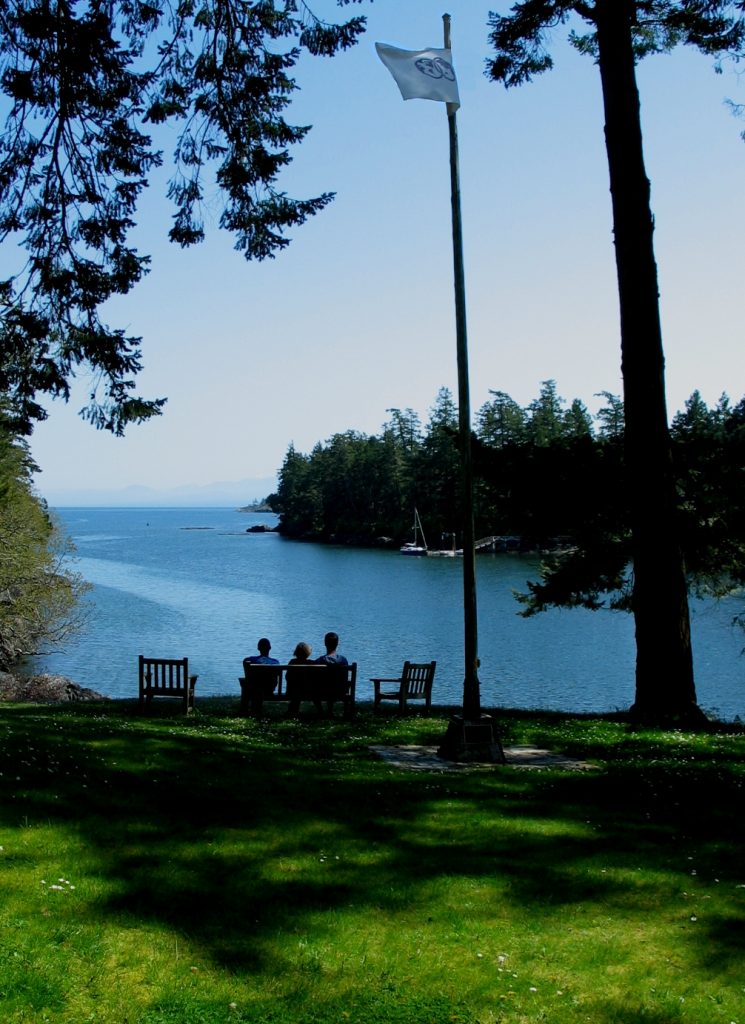
-
A view of Pedder Bay looking South East from “the Point “on Lester Pearson College Campus
-
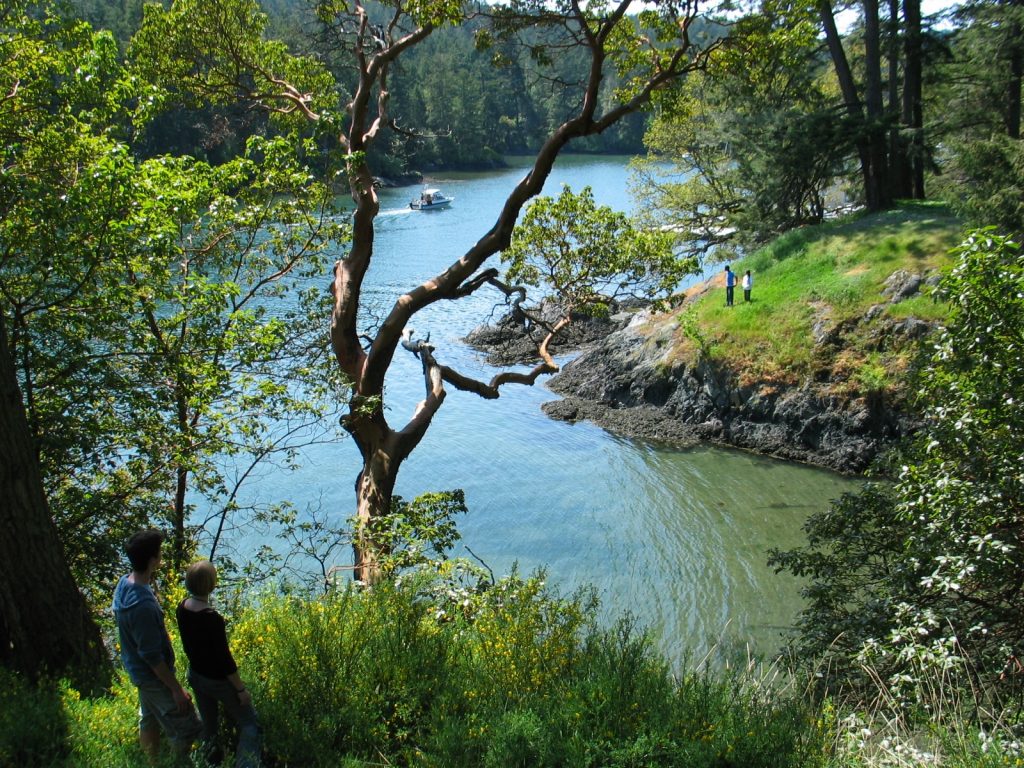
-
East from “the Point “on Lester Pearson College Campus “The Point” on Pearson College Campus
-
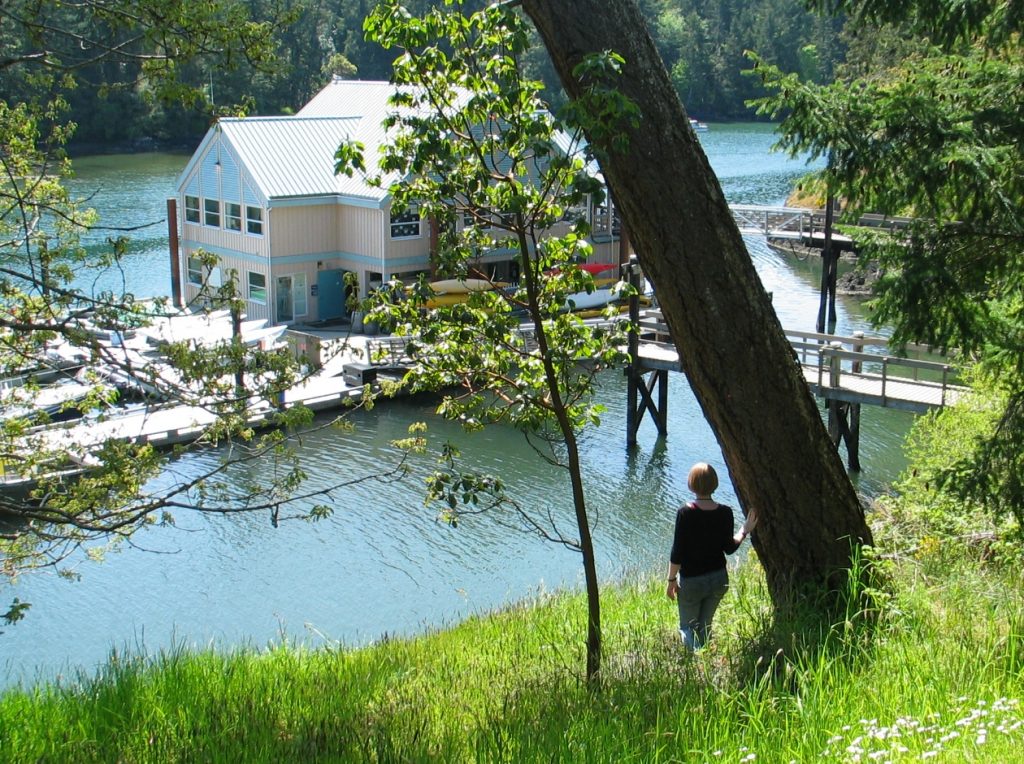
-
The docks at Pearson College with Marine Lab.
The following is excerpted from the College reference guide ” The Road Ends at Our Place: The Ecosystems of Pearson College.
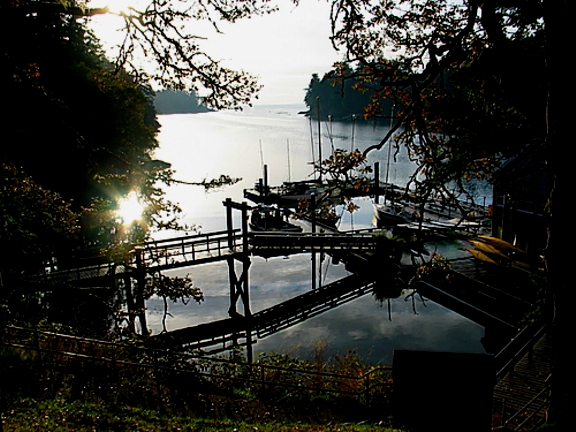 One of the first projects the students faced when the college was founded was to build the floating docks as their outlet to the sea. This provided for a rich marine environment program which has expanded since that time. College boats provide for field trips in the biology and environmental systems classes, and the afternoon activities in sailing, SCUBA diving and kayaking lead to an active seafront. One of the first projects the students faced when the college was founded was to build the floating docks as their outlet to the sea. This provided for a rich marine environment program which has expanded since that time. College boats provide for field trips in the biology and environmental systems classes, and the afternoon activities in sailing, SCUBA diving and kayaking lead to an active seafront.
In 2003, the addition of the floating lab provided room for three more classrooms as well as a diving equipment room, workshop, office and storage space for the sea activities. The immediate access to the ecosystems of Pedder Bay make it an ideal facility for the life sciences.
 Only on rare occasions (once in ten years) do we get a week of cold weather and snow which causes the inner part of the bay up to the college docks to freeze over. The campus for a few brief days takes on a unique beauty when this happens. It also is a time when we can take advantage of the learning opportunity by having the students experience the unique aspects of “snow ecology”. For students from tropical countries who may never have experienced such conditions, there is a realization that snow has insulating features, can be breathed through, is variable in weight and density, and plants from temperate climates adapt to it in unique ways. Meanwhile down at the waterfront, unique patterns of salinity and fresh water can be discovered with ice formation. Only on rare occasions (once in ten years) do we get a week of cold weather and snow which causes the inner part of the bay up to the college docks to freeze over. The campus for a few brief days takes on a unique beauty when this happens. It also is a time when we can take advantage of the learning opportunity by having the students experience the unique aspects of “snow ecology”. For students from tropical countries who may never have experienced such conditions, there is a realization that snow has insulating features, can be breathed through, is variable in weight and density, and plants from temperate climates adapt to it in unique ways. Meanwhile down at the waterfront, unique patterns of salinity and fresh water can be discovered with ice formation.
 The academic building viewed from the docks after one of those rare snowfalls that we get in Pedder Bay. The academic building viewed from the docks after one of those rare snowfalls that we get in Pedder Bay.
The shores of Pedder Bay provide more fascinating variety to our campus, and the profile of the bay changes considerably from low to high tide, a range of 3 meters. The water of the bay varies in temperature from 8 degrees Celsius in the winter to 13 degrees in the summer.
The mudflat in front of the sea front commons building is typical of the small inlets along the bay. It provides a rich habitat to mud-dwelling organisms and red-rock and dungeness crabs. Overhanging trees and trees which have fallen into the water provide the substrate for the bay mussel , Mytilus trossulus, and several barnacle species. Several species of limpet and littorine snails graze rocks in the intertidal zone and the large white anemone , Metridium farcimen, can be seen on the bottom of the bay, anchored to submerged branches or exposed rocks. All the invertebrates contribute their larva to the rich planktonic mix in the waters of the bay. The main producers in the bay are the large round centric diatoms, Coscinodiscus sp. but on different occasions under the microscopes of the biology students, a wide array of geometric shapes of other phytoplankton species will appear. Copepods and the nauplius larvae of barnacles make up the main zooplankton of the bay.
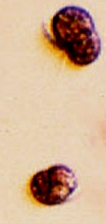 Often in the spring when the sunlight levels are adequate, the nutrient laden water from winter run-off may support a non-poisonous red tide. A deep reddish bloom caused by the organism Mesodinium rubrum will cover parts of the bay. This is a unique marine photosynthetic ciliate which can fix energy because it has a cryptophyte endosymbiontic red algae inside it. A good example of a mutualistic relationship occurring on a massive scale within the bay. Often in the spring when the sunlight levels are adequate, the nutrient laden water from winter run-off may support a non-poisonous red tide. A deep reddish bloom caused by the organism Mesodinium rubrum will cover parts of the bay. This is a unique marine photosynthetic ciliate which can fix energy because it has a cryptophyte endosymbiontic red algae inside it. A good example of a mutualistic relationship occurring on a massive scale within the bay.
The Floating lab and docks provide a great amount of substrate on which a variety of organisms attach. These areas have also been useful for the science classes in providing areas for hanging baskets for aquaculture experiments. Within easy access there is a rich fouling community which provides many specimens used in classes. Almost every invertebrate phylum is represented on the underside of these docks. The plankton of Pedder Bay form the nutritional and energy base of the ecosystem.This file provides a lab assignment on quantification of plankton biodiversity .
The Seabirds of Pedder Bay
-
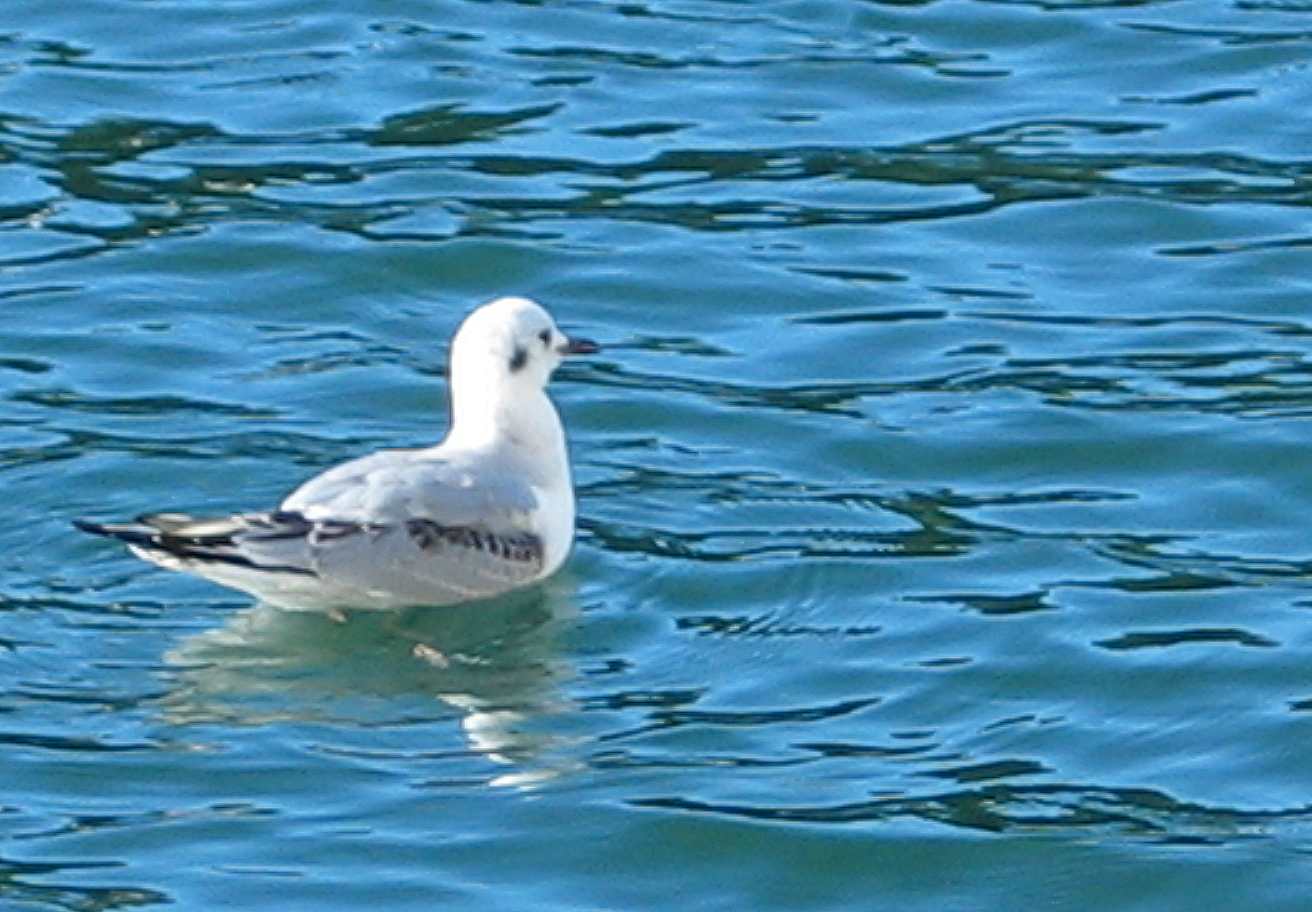
-
In November of 2008, The Bonapartes Gulls stayed for several days diving and feeding on the herring balls and other forage fish around the docks at Pearson College
-
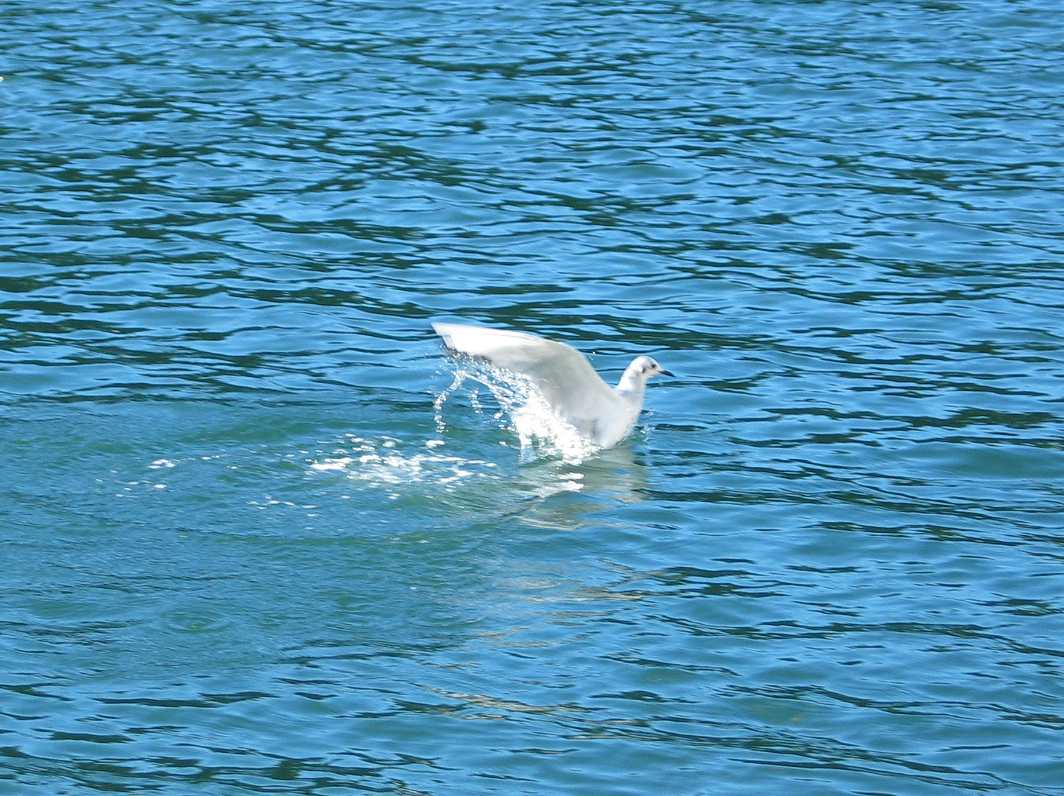
-
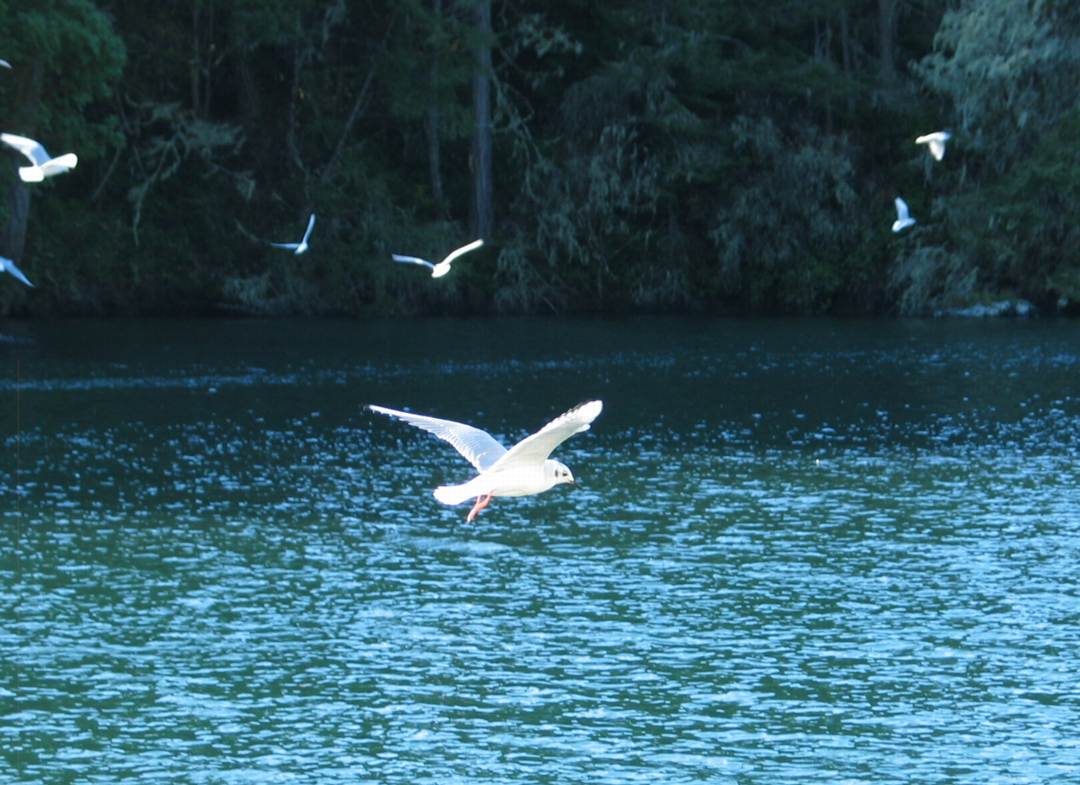
-

-
Great Blue Heron standing on the docks at Pearson College
-
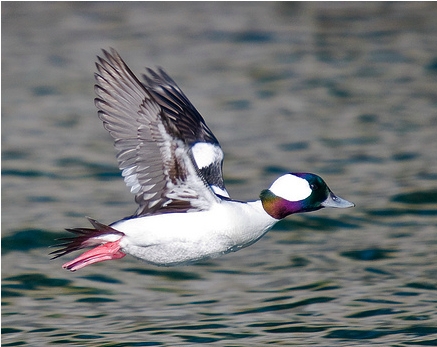
-
Bufflehead, (Bucephala albeola) a common overwintering duck in the Bay.
-
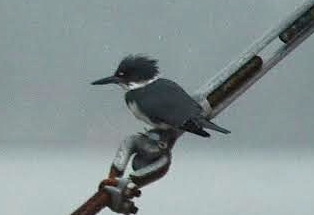
-
Belted Kingfisher
-

-
Male Mergus merganser R. murphy photo.
-
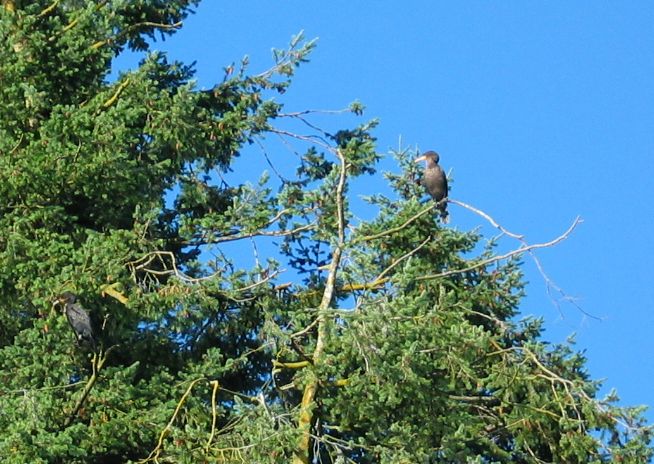
-
Juvenile Double Crested Cormorant on the right , adult , the darker one to the left.
-
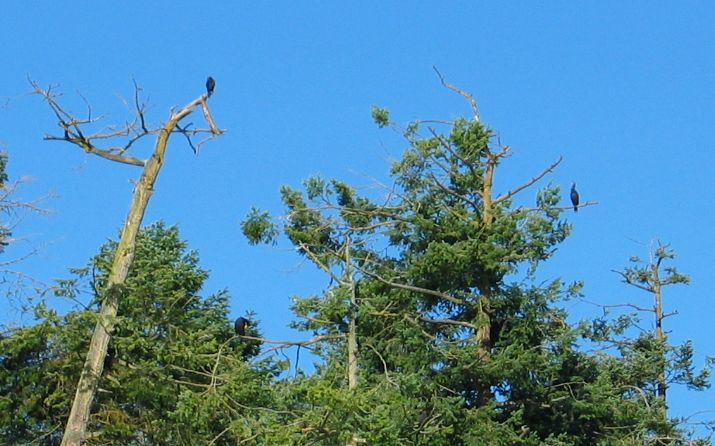
-
Note the trees are being stripped of the top branches as they make way for more comfortable perches
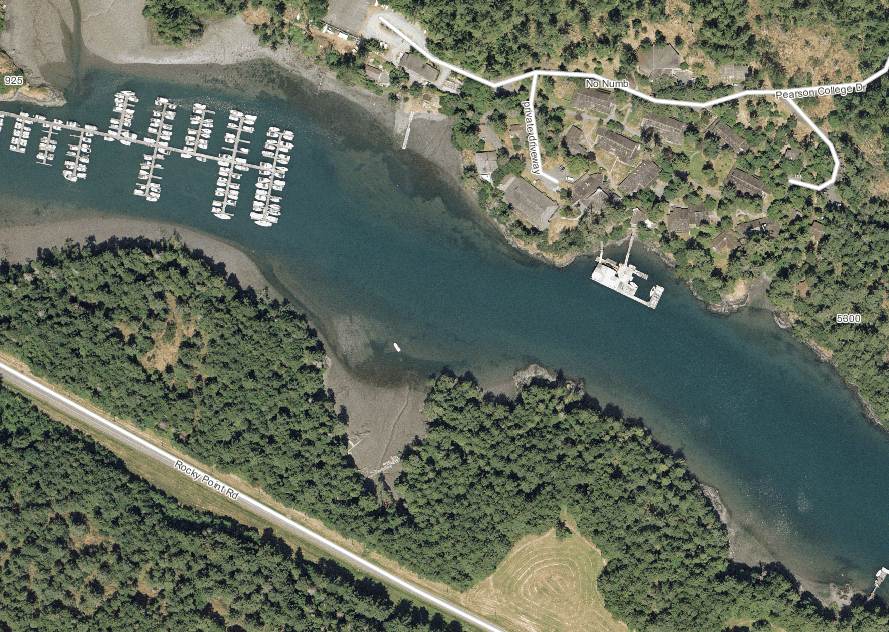
what
MANOR and FOSSIL POINT TO CAPE CALVER :
ROCKY COASTLINE
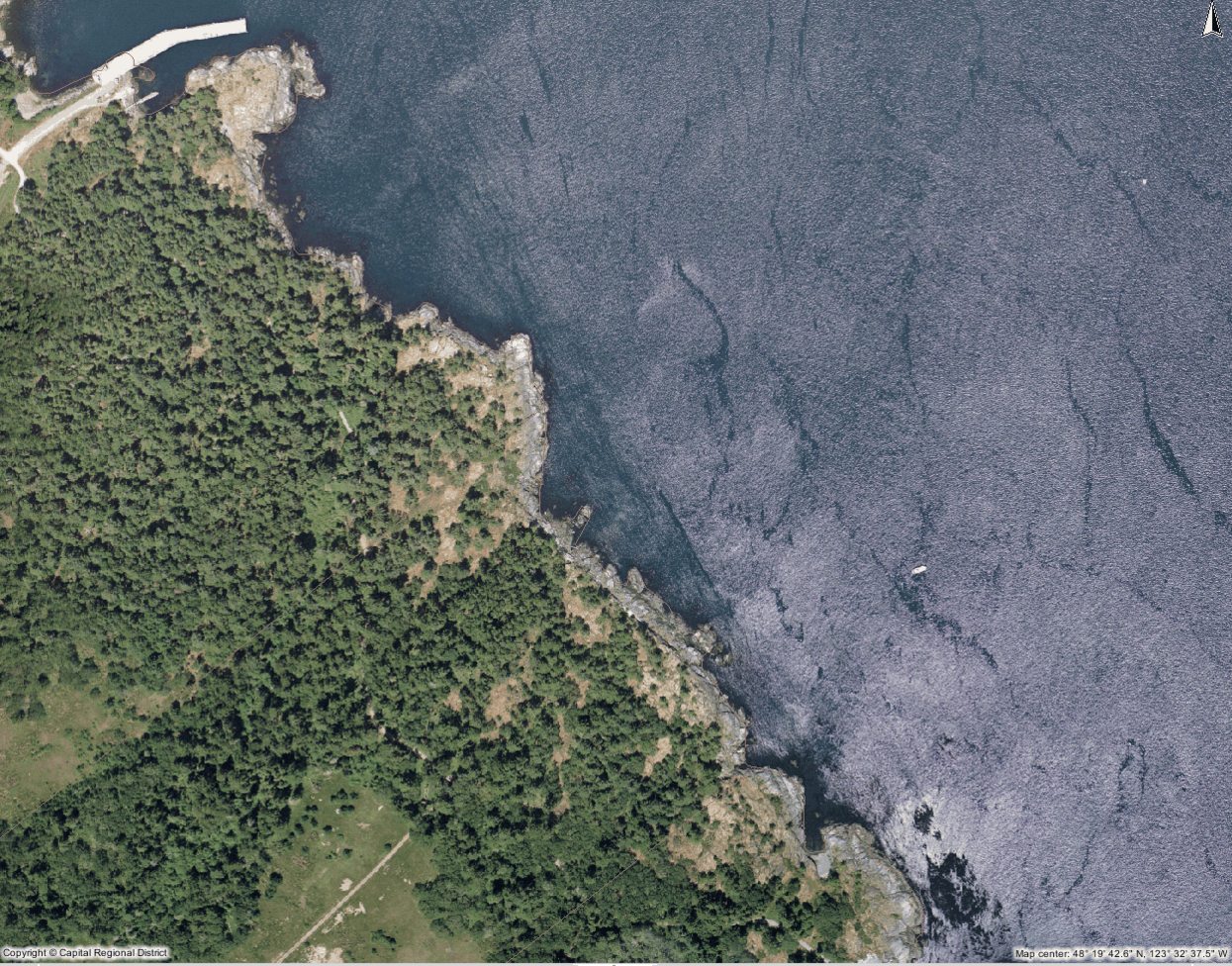 This section is notable mainly for it’s geological features. Here there is evidence of the most recent glaciation of 10,000 years ago: a massive conglomerate boulder on the shore and the glacial striae or grooves on the rock of the coastline. In other parts of the bay, granite boulders add to the collection of bits of glacial evidence This section is notable mainly for it’s geological features. Here there is evidence of the most recent glaciation of 10,000 years ago: a massive conglomerate boulder on the shore and the glacial striae or grooves on the rock of the coastline. In other parts of the bay, granite boulders add to the collection of bits of glacial evidence
. Shore pine, Pinus contorta , penetrates along the shore into Pedder Bay from the outer parts of Rocky Point. In this outer section, salt spray is received above the intertidal zone in winter storms from the north east. The fetch, or distance across the ocean upon which the wind can impart energy in a storm is well over 50 kilometers for this outer section if a line is drawn from Cape Calver to a point in the open ocean beyond Victoria. Further into the bay from Fossil Point where there are more protected shores, the predominant tree cover is Douglas fir, and trees can grow closer to the water.
-
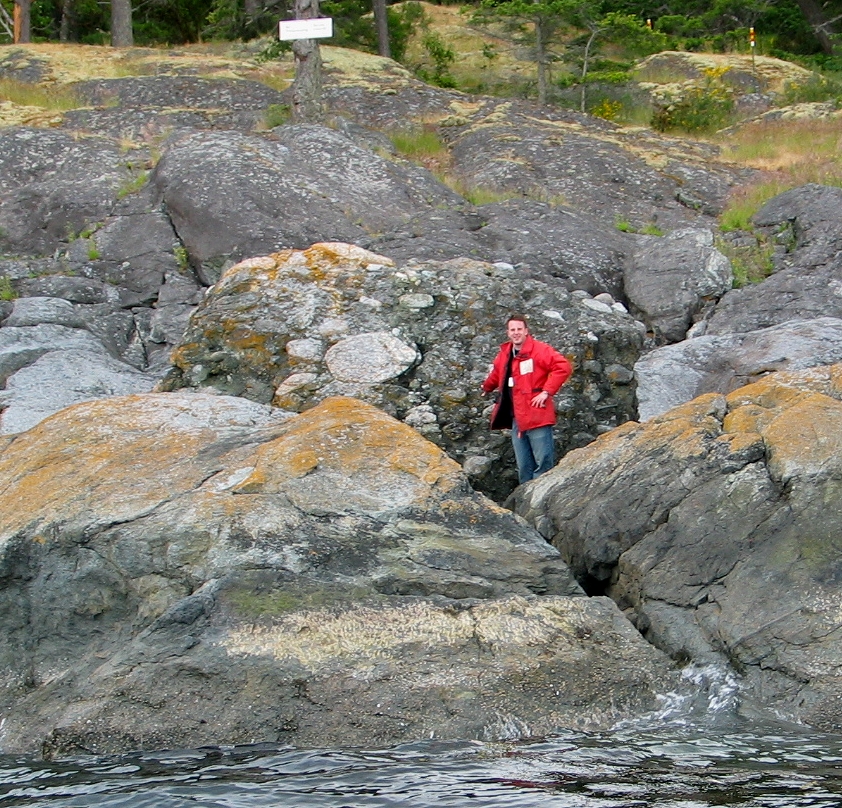
-
Glacial erratic : A large conglomerate boulder near Fossil Point.
-
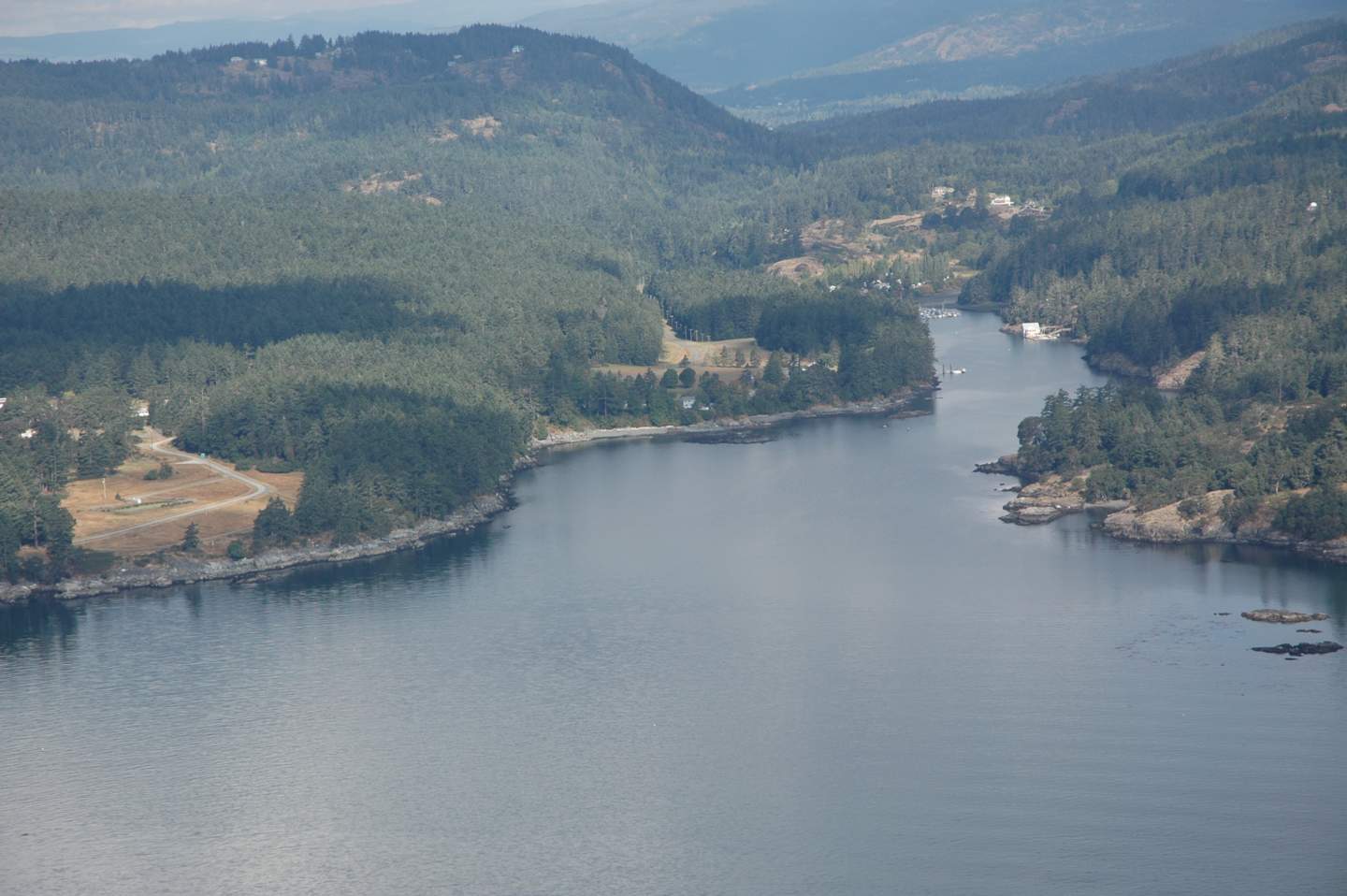
-
The inner mouth of Pedder bay with Pearson College docks on the right,
-
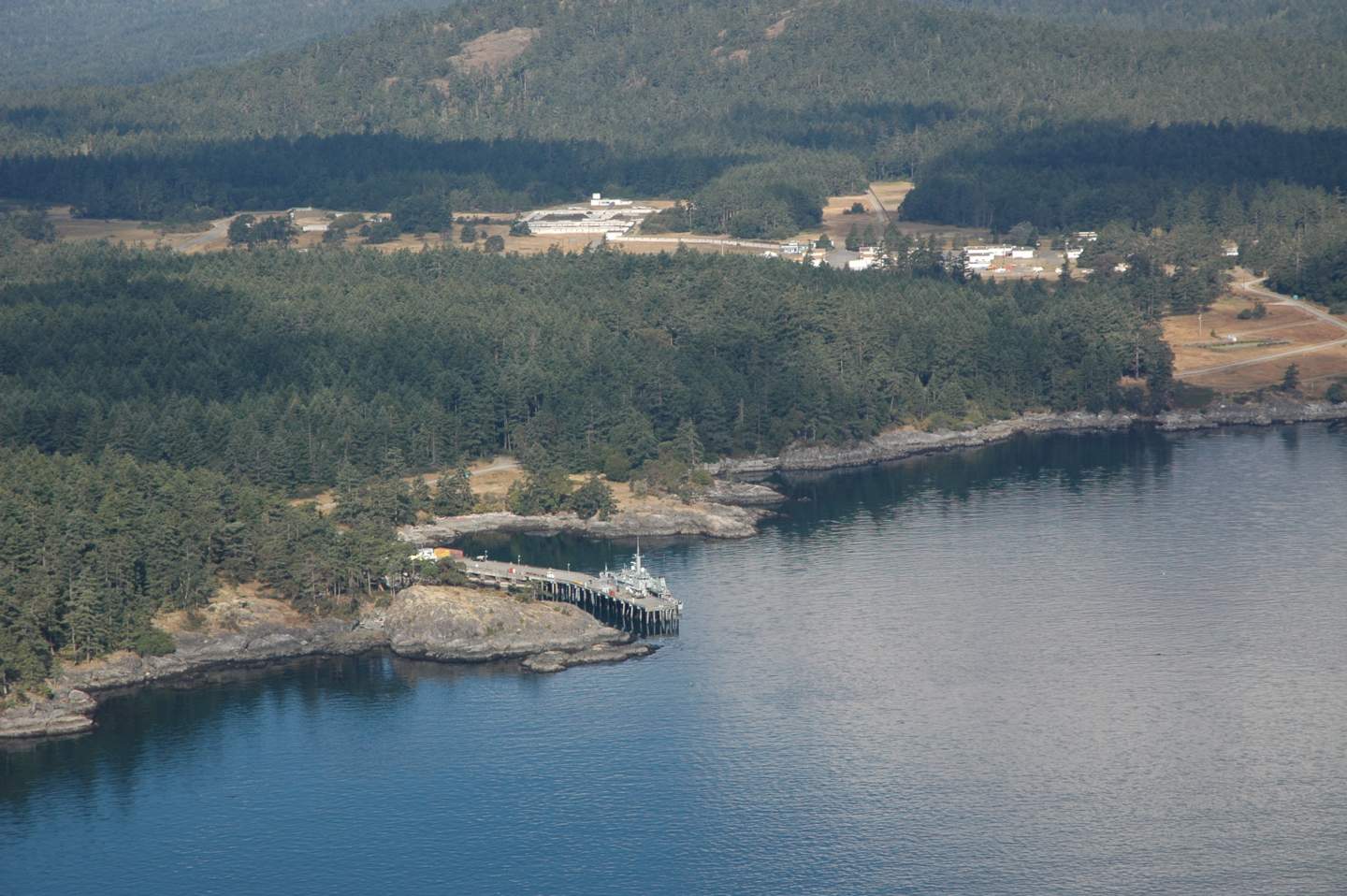
-
DND Jetty
-
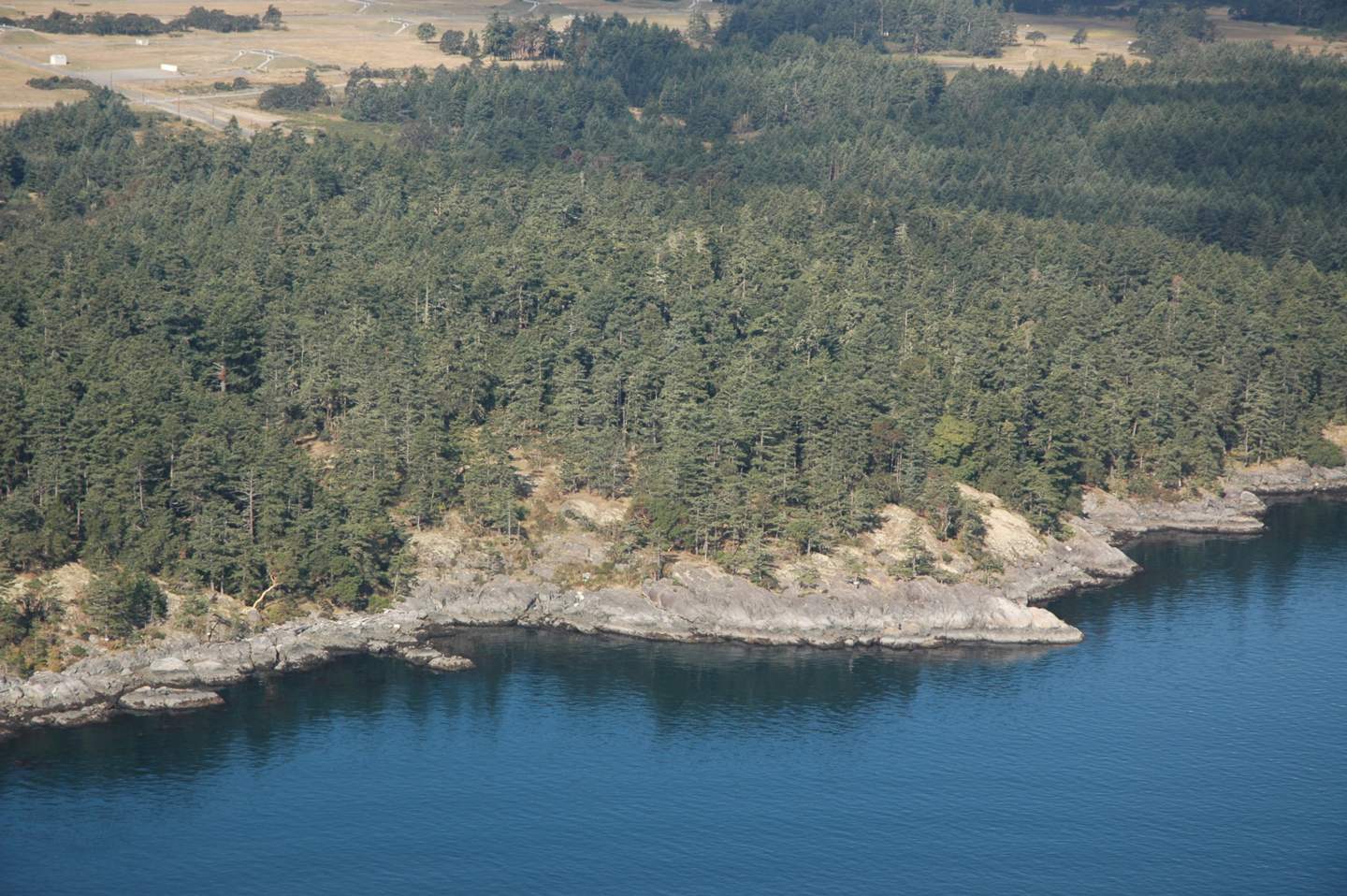
-
Cape Cal;ver to Fossil Point
-
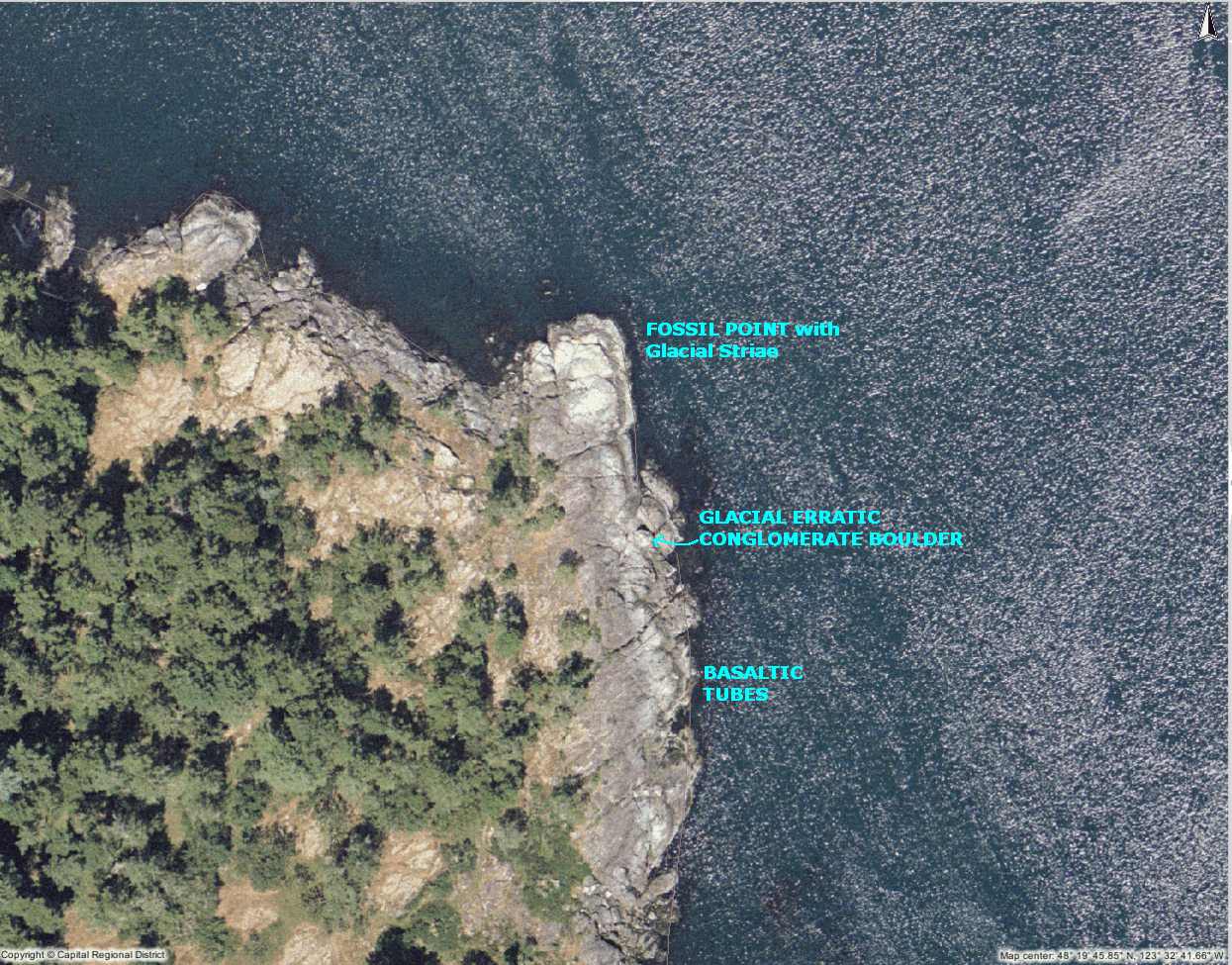
-
Map of Fossil Point and Area
-
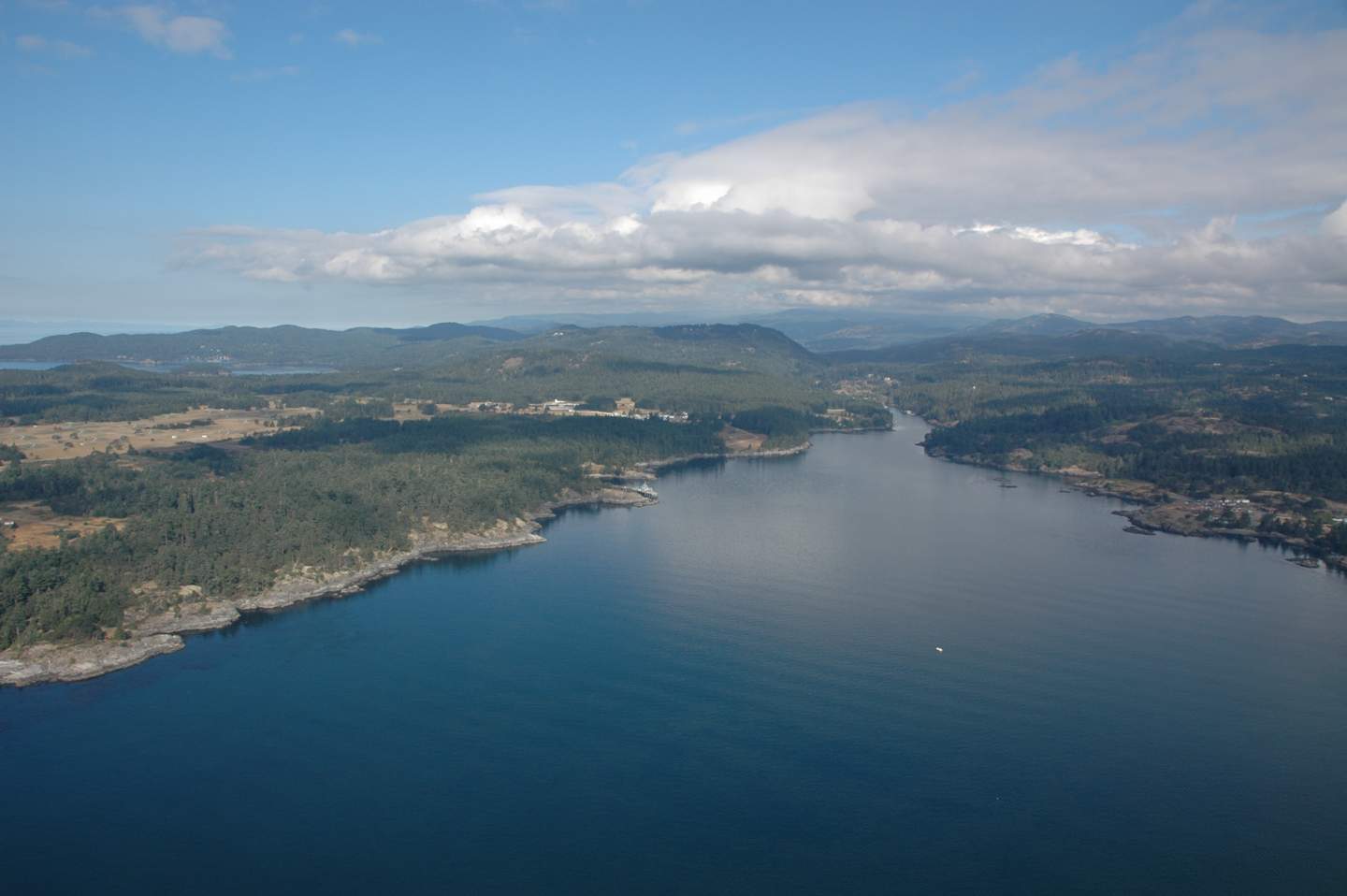
-
The outer mouth of Pedder Bay, Cape Calver on the left.
-

-
Shore pine Pinus Contorta
|
|
 Lester B. Pearson College opened in 1974 on the north side of Pedder Bay on land formerly owned by the Department of National Defence . At high tide, most of the shoreline of the campus is rocky intertidal, however at low tide, mudflats appear along much of the shore.
Lester B. Pearson College opened in 1974 on the north side of Pedder Bay on land formerly owned by the Department of National Defence . At high tide, most of the shoreline of the campus is rocky intertidal, however at low tide, mudflats appear along much of the shore.

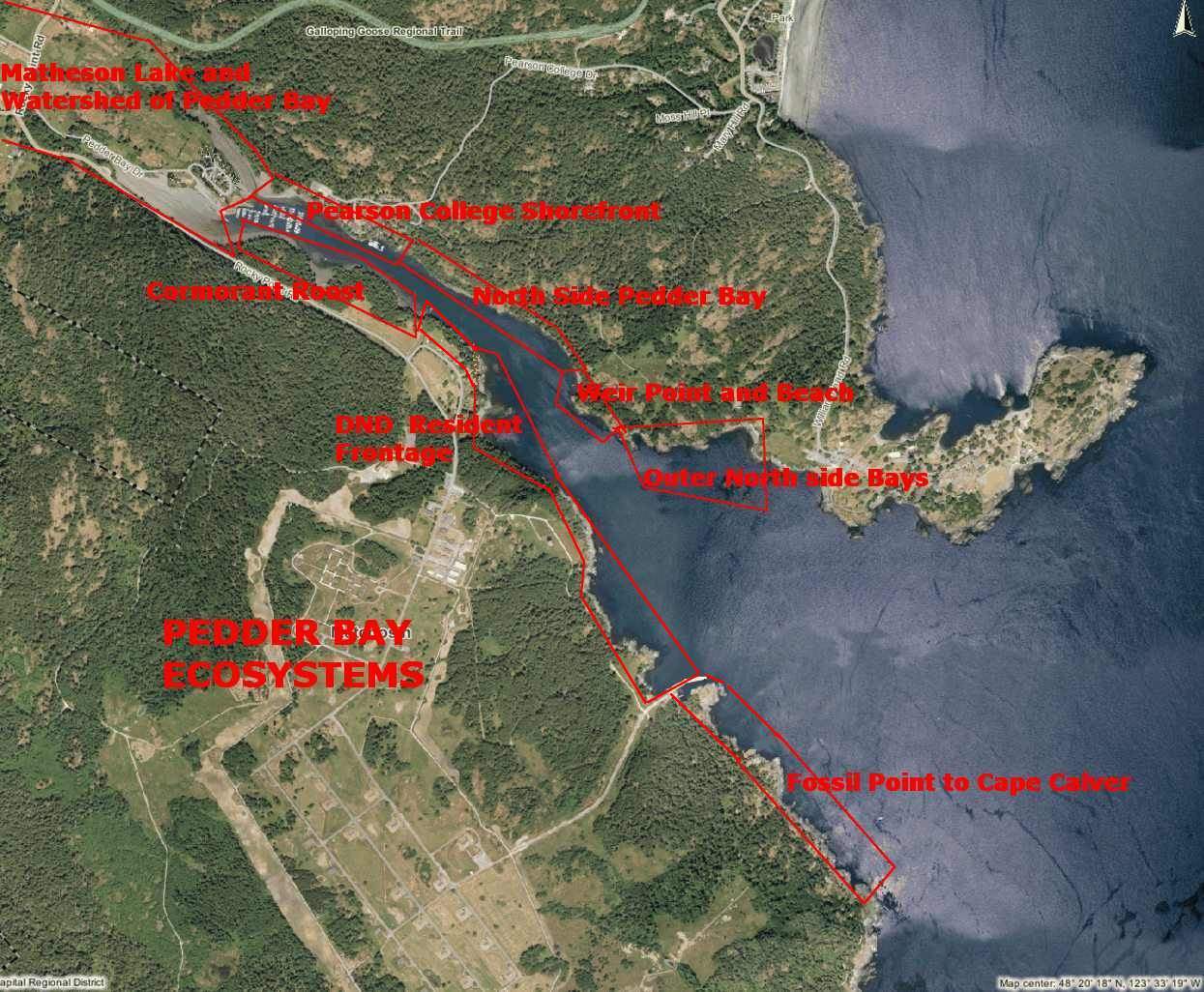







 Often in the spring when the sunlight levels are adequate, the nutrient laden water from winter run-off may support a non-poisonous red tide. A deep reddish bloom caused by the organism Mesodinium rubrum will cover parts of the bay. This is a unique marine photosynthetic ciliate which can fix energy because it has a cryptophyte endosymbiontic red algae inside it. A good example of a mutualistic relationship occurring on a massive scale within the bay.
Often in the spring when the sunlight levels are adequate, the nutrient laden water from winter run-off may support a non-poisonous red tide. A deep reddish bloom caused by the organism Mesodinium rubrum will cover parts of the bay. This is a unique marine photosynthetic ciliate which can fix energy because it has a cryptophyte endosymbiontic red algae inside it. A good example of a mutualistic relationship occurring on a massive scale within the bay.
















